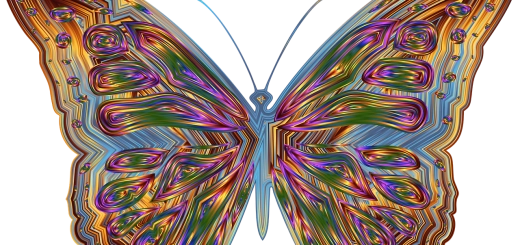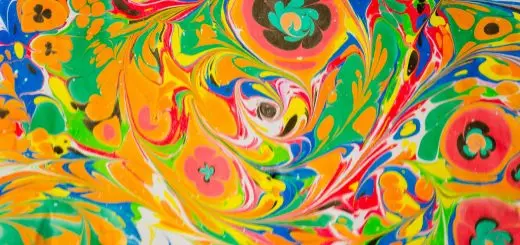Uzumaki: Spirals in Japanese Myth and Symbolism

Looking for more amazing products? Check out our online store and explore our collection here! Happy shopping!
Before diving in, please note: This post is for informational purposes only. If you’d like to know more about how we approach topics, feel free to check out our friendly Disclaimer Page.
Hey there, amazing readers! 
We’re committed to delivering quality posts, and your support (even just sticking around despite the ads) means everything to us. So, bear with us, and thanks for helping us keep the good vibes rolling. Now, on to the fun stuff!
TRANSLATE BUTTON AT THE END OF THE ARTICLE
Overview
Uzumaki, meaning "spiral" in Japanese, holds a rich historical and cultural significance in Japanese mythology and symbolism.
From ancient times, the spiral motif has been deeply ingrained in Japanese culture, art, and religious beliefs.
This article aims to explore the various aspects of the Uzumaki symbol, its origins, and its influence on different aspects of Japanese society.
From its connection to Shintoism and the natural world, to its role in folklore, architecture, calligraphy, and even its psychological implications, the spirals of Uzumaki have left an indelible mark on Japanese culture.
Uzumaki: Spirals in Japanese Myth and Symbolism
The symbol of Uzumaki has a long and storied history in Japan.
It is believed to have originated from the Jomon period (14,000-300 BCE), where pottery with spiral motifs was commonly found.
These early depictions of spirals were associated with fertility and the cycle of life.
Over time, the symbol evolved to represent not just physical spirals, but also metaphorical ones, signifying growth, continuity, and eternity.
A Glimpse into Uzumaki’s Historical Significance
Uzumaki’s historical significance can be seen in its association with the Imperial Family of Japan.
The symbol has been used extensively in the Imperial Crest, known as the Chrysanthemum Seal.
The Chrysanthemum Seal is a sixteen-petal flower with a central spiral pattern, representing the Emperor’s divine descent and the continuity of the imperial lineage.
Exploring the Origins of Uzumaki in Japanese Culture
The origins of Uzumaki can be traced back to ancient Japanese beliefs in the power of nature.
The spiral shape was seen as a representation of natural forces such as wind and water, which were considered vital for life and growth.
The Japanese also believed that the spiral symbolized the flow of energy, both within oneself and in the universe.
The Intricate Symbolism of Spirals in Japanese Art
In Japanese art, spirals are often used to depict various natural phenomena.
For example, the Great Wave off Kanagawa, a famous woodblock print by Hokusai, features powerful spiraling waves.
This representation not only captures the force of the sea but also symbolizes the ever-changing nature of life and the constant flow of time.
Unraveling the Spiritual Meaning of Uzumaki in Shintoism
Shintoism, the indigenous religion of Japan, also incorporates the symbol of Uzumaki.
In Shinto shrines, rope with twisted spirals, known as "shimenawa," is used to demarcate sacred spaces.
The spirals are believed to ward off evil spirits and create a protective barrier between the human realm and the divine realm.
Uzumaki’s Connection to the Natural World and Cosmos
The spiral symbol of Uzumaki is deeply connected to the natural world and the cosmos in Japanese culture.
The spiral motifs can be seen in various natural elements, such as seashells, whirlpools, and even the formation of galaxies.
These natural occurrences are seen as manifestations of the Uzumaki symbol, representing the cyclical nature of life and the interconnectedness of all things.
The Role of Spirals in Japanese Folklore and Superstitions
In Japanese folklore, spirals often feature in stories and superstitions.
For example, the myth of the "Ryugu," a palace under the sea, tells of a spiral staircase leading to an underwater kingdom.
Additionally, it is believed that sleeping with one’s head in a spiral-shaped position could lead to nightmares or even possession by evil spirits.
Uzumaki’s Influence on Traditional Japanese Architecture
The spiral motif of Uzumaki has greatly influenced traditional Japanese architecture.
One prominent example is the design of the "karesansui" or Zen rock gardens.
These gardens often feature carefully raked gravel arranged in circular patterns or spirals, which symbolize the harmony of nature and serve as a meditative space.
Spiraling Patterns in Japanese Calligraphy and Design
The concept of the spiral is also reflected in Japanese calligraphy and design.
The dynamic strokes of calligraphy often incorporate swirling and spiraling movements, capturing the energy and flow of the brush.
In design, spirals are commonly used in patterns and motifs, adorning textiles, ceramics, and architecture.
Uzumaki as a Powerful Symbol of Continuity and Growth
Uzumaki’s symbolism of continuity and growth has been embraced in Japanese society.
The spiral motif is often seen in celebratory events, such as weddings and festivals, symbolizing the perpetual nature of life and the hope for a prosperous future.
It serves as a reminder of the cyclical nature of existence and the potential for personal and societal growth.
The Psychological Implications of Spirals in Japanese Culture
The psychological implications of spirals in Japanese culture are intriguing.
Research has shown that the visual representation of spirals can induce a sense of movement and flow, leading to feelings of calmness and relaxation.
Additionally, spirals are believed to stimulate creativity and open the mind to new possibilities.
Contemporary Representations of Uzumaki in Popular Culture
The influence of Uzumaki has transcended traditional Japanese culture and can be seen in contemporary popular culture.
Manga artist Junji Ito’s horror series titled "Uzumaki" explores the dark and obsessive nature of spirals.
This manga has gained international acclaim and showcases the enduring fascination and intrigue surrounding spirals in Japanese culture.
Conclusion
The spirals of Uzumaki hold a profound significance in Japanese culture, spanning centuries of history and influencing various aspects of society.
From its origins in ancient pottery to its presence in religious beliefs, art, architecture, and folklore, the Uzumaki symbol is a testament to the deep-rooted connection between the Japanese people and the natural world.
Its spiral motifs continue to captivate and inspire, serving as a reminder of the cyclical nature of life, the potential for growth, and the intricate beauty found in Japanese myths and symbolism.

The Enlightenment Journey is a remarkable collection of writings authored by a distinguished group of experts in the fields of spirituality, new age, and esoteric knowledge.
This anthology features a diverse assembly of well-experienced authors who bring their profound insights and credible perspectives to the forefront.
Each contributor possesses a wealth of knowledge and wisdom, making them authorities in their respective domains.
Together, they offer readers a transformative journey into the realms of spiritual growth, self-discovery, and esoteric enlightenment.
The Enlightenment Journey is a testament to the collective expertise of these luminaries, providing readers with a rich tapestry of ideas and information to illuminate their spiritual path.
Our Diverse Expertise
While our primary focus is on spirituality and esotericism, we are equally passionate about exploring a wide range of other topics and niches 

To ensure we provide the most accurate and valuable insights, we collaborate with trusted experts in their respective domains 
Our blog originally focused on spirituality and metaphysics, but we’ve since expanded to cover a wide range of niches. Don’t worry—we continue to publish a lot of articles on spirituality! Frequently visit our blog to explore our diverse content and stay tuned for more insightful reads.
Hey there, amazing reader! 
Check out our store here and take a peek at some of our featured products below! Thanks for being awesome!













